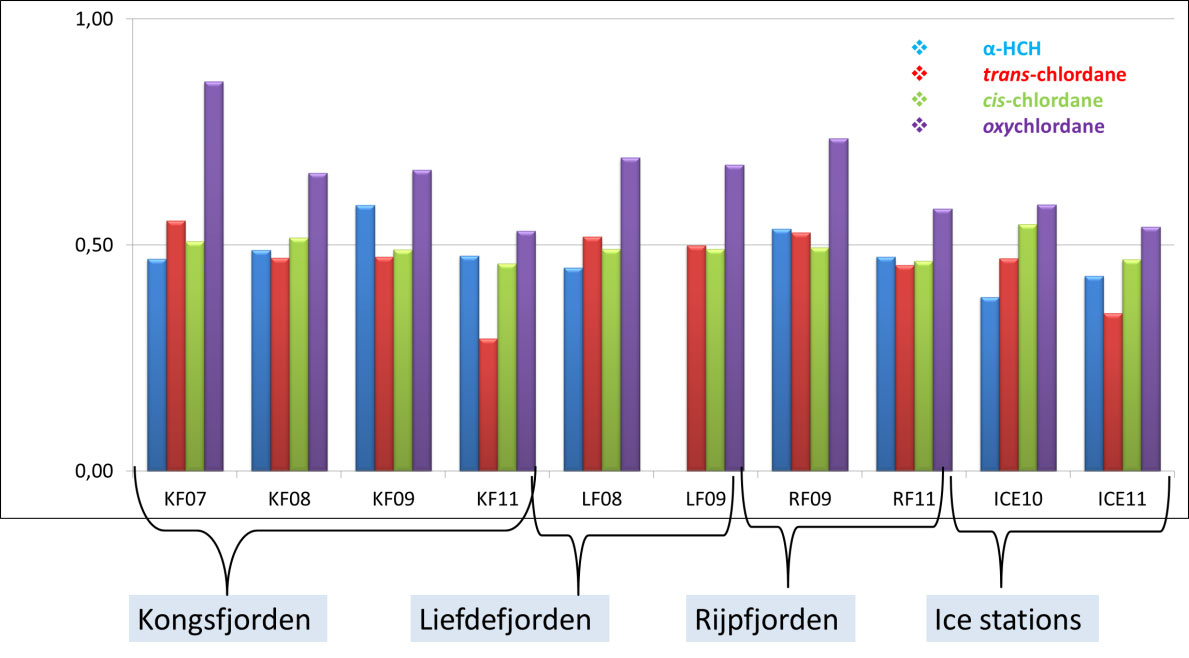Oceanographic conditions and pesticide distribution in plankton
Several plankton samples from five years sampling at locations around Svalbard were analysed for chiral pesticides. Any non-racemic enantiomeric fractions (EF) and differences therein can indicate different sources, new or weathered sources. (See page Biologically available fractions of contaminants) When microbes “get the time” to degrade pesticides, it might be enantiomer selective degraded. Hence, an old, weathered source can have a different enantiomeric profile compared to a new, fresh one, which is racemic (even distribution of the enantiomers).
Concentration and enantiomeric fractions (EFs) of chiral pesticides (α-HCH, trans-, cis- and oxychlordane) were determined in Arctic zooplankton, mainly Calanus spp. collected during 2007-11 from Svalbard fjords and pack-ice with different hydrological conditions present. Deviations from racemic EFs were found for all species and chiral pesticides, although the temporal and spatial enantiomer distribution varied. No significant trends for a preferred degradation of certain enantiomers were found, except for an enrichment of (+)-oxychlordane at all stations (EF 0.53-0.86) and species. The deviations from racemic EF of oxychlordane seem to reflect the deviations for cis-chlordane. Oxychlordane is the result of (enantioselective) biodegradation of trans- and cis-chlordane. Trans-chlordane in Kongsfjorden and the ice station in 2011 showed the lowest (0.29 and 0.35, respectively) EFs. Both stations had Atlantic water present at the sampling time.
Changes of ice cover over the years in combination with EFs of α-HCH illustrate a potential to use EFs as a tool to elucidate climate change driven processes in an ice influenced Arctic food web. Benthic influences on EFs in pelagic zooplankton in fjords should be investigated to understand transfer processes of contaminants between the benthic and pelagic environment.
The present data set is considered as the largest data set of chiral pesticides determined in Arctic zooplankton so far reported, see diagram below.






















